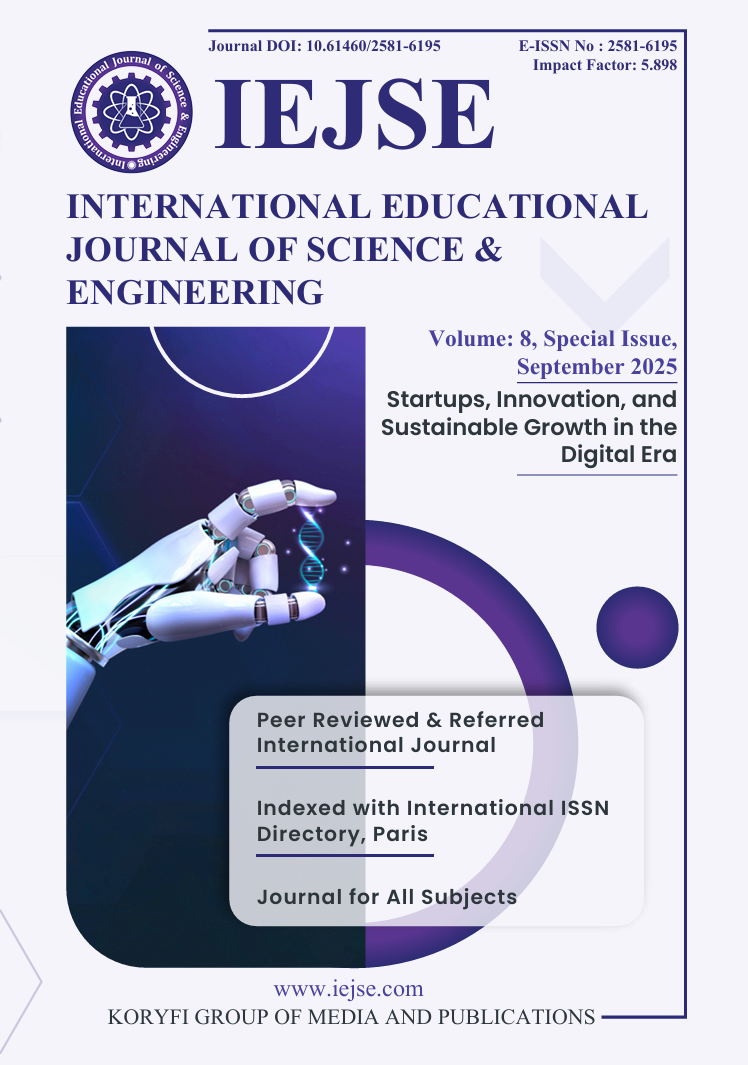IMPACT OF GST ON SMALL AND MEDIUM ENTERPRISES (SMES) IN INDIA
Keywords:
GST, SMEs, Compliance Burden, Input Tax Credit, Digital AdoptionAbstract
The introduction of the Goods and Services Tax (GST) in India in 2017 aimed to unify the country’s indirect tax system and create a single national market. This paper examines its impact on Small and Medium Enterprises (SMEs), which contribute nearly 30% to India’s GDP and employ over 110 million people. Using descriptive and analytical methods, the study highlights both opportunities and challenges arising from GST. Findings indicate that while GST reduced tax cascading, improved transparency, and encouraged digital adoption, it also imposed a disproportionate compliance burden on micro enterprises. Delays in input tax credit refunds created significant working capital stress, whereas digitally capable medium firms benefitted from improved interstate trade and stronger turnover growth. The paper concludes with policy recommendations such as simplified compliance procedures, faster refund processing, and digital support measures to ensure GST becomes more inclusive and SME-friendly.
References
I. Creswell, J. W., & Creswell, J. D. (2018). Research design: Qualitative, quantitative, and mixed methods approaches (5th ed.). Sage.
II. Ebrill, L., Keen, M., Bodin, J.-P., & Summers, V. (2001). The Modern VAT. International Monetary Fund.
III. Federation of Indian Chambers of Commerce & Industry (FICCI). (2019). SME Survey on GST Implementation. New Delhi: FICCI.
IV. Government of India. (2017). The Central Goods and Services Tax Act, 2017. New Delhi: Ministry of Finance.
V. GST Council. (2018). GST: One Nation, One Tax, One Market. New Delhi: Government of India.
VI. GST Network (GSTN). (2022). GST Statistics and Registered Taxpayers.
VII. Gupta, R., & Jain, P. (2019). Impact of GST on working capital management of SMEs in India. Journal of Commerce and Management Thought, 10(2), 345–358.
VIII. Hair, J. F., Black, W. C., Babin, B. J., & Anderson, R. E. (2019). Multivariate data analysis (8th ed.). Cengage.
IX. Ministry of Micro, Small and Medium Enterprises (MSME). (2022). Annual Report 2021–22. Government of India.
X. Nath, A., & Verma, S. (2020). GST and SME competitiveness: Evidence from Indian manufacturing. International Journal of Business and Economics, 19(1), 55–72.
XI. Nunnally, J. C., & Bernstein, I. H. (1994). Psychometric theory (3rd ed.). McGraw-Hill.
XII. OECD. (2019). Consumption Tax Trends 2019: VAT/GST and Excise Rates, Trends and Policy Issues. Paris: OECD Publishing.
XIII. PwC India. (2020). Impact of GST on Indian SMEs. New Delhi: PwC.
XIV. Reserve Bank of India. (2021). Report on Trend and Progress of Banking in India 2020–21. RBI.
XV. Sharma, D. (2018). Challenges of GST implementation for SMEs in India. Indian Journal of Accounting, 50(1), 112–120.
XVI. Singh, R. (2021). Sectoral analysis of GST implications on Indian SMEs. Asia-Pacific Journal of Management Research and Innovation, 17(3), 245–259.
XVII. World Bank. (2018). India Development Update: Growth through Productivity. Washington, DC: World Bank.
Additional Files
Published
How to Cite
Issue
Section
License
Copyright (c) 2025 International Educational Journal of Science and Engineering

This work is licensed under a Creative Commons Attribution 4.0 International License.





